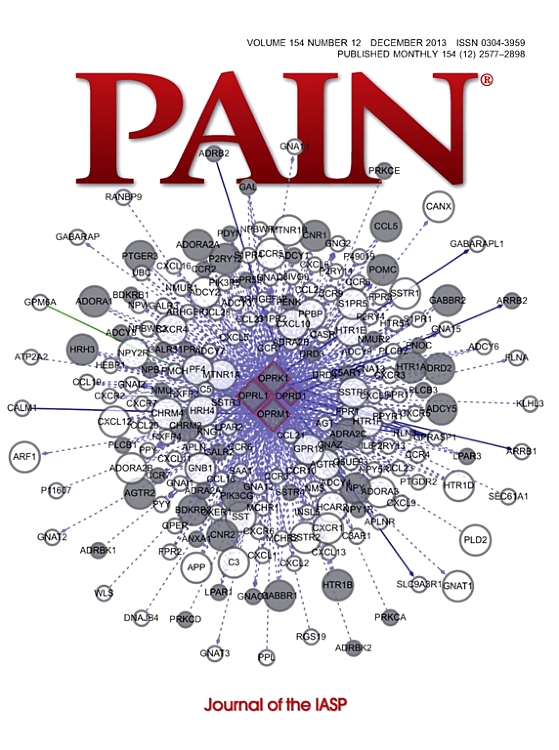The bradykinin-1 receptor antagonist fulmetibant in patients with diabetic neuropathic pain: the randomized, crossover, placebo-controlled, double-blind, phase 2a BRADiNP study.
IF 5.9
1区 医学
Q1 ANESTHESIOLOGY
引用次数: 0
Abstract
The BRADiNP study was a multicenter, randomized, double-blind, placebo-controlled, 2-treatment complete crossover study evaluating the efficacy and safety of the bradykinin 1 receptor antagonist fulmetibant in patients with diabetic neuropathic pain (DNP) (ClinicalTrials.gov NCT05219812). To be eligible for enrollment, patients had to be adults with type 1 or type 2 diabetes mellitus with painful distal symmetric sensorimotor neuropathy of >6 months' duration and neuropathic pain. After blinded washout of prior DNP treatment, patients were randomized 1:1 to start with either fulmetibant once daily or placebo in the first 4 weeks' treatment period and vice versa in the second period. The primary endpoint was the change from baseline in weekly mean 24-hour average pain intensity score at week 4. Seventy-nine participants were treated with fulmetibant (450 mg once daily), and 79 participants were treated with placebo; 75 participants completed treatment in both treatment periods. At week 4, the mean treatment difference was 0.07 (-0.170 to 0.314). Adverse events were mostly mild or moderate in severity and occurred in 51.3% of the treated participants (41.8% after treatment with fulmetibant and 32.9% after treatment with placebo). The results of this study show that preclinical efficacy seen with this bradykinin 1 receptor antagonist did not translate into a meaningful therapeutic approach for pain management in patients with DNP.糖尿病神经性疼痛患者的缓激肽-1受体拮抗剂富米班:随机、交叉、安慰剂对照、双盲、2a期BRADiNP研究
BRADiNP研究是一项多中心、随机、双盲、安慰剂对照、两种治疗的完全交叉研究,旨在评估缓激肽1受体拮抗剂富米坦治疗糖尿病神经性疼痛(DNP)的疗效和安全性(ClinicalTrials.gov NCT05219812)。符合入组条件的患者必须是患有1型或2型糖尿病的成年人,伴有疼痛的远端对称感觉运动神经病变,病程为60 ~ 6个月,伴有神经性疼痛。在先前DNP治疗的盲法洗脱后,患者按1:1的比例随机分配,在治疗的前4周开始使用每日一次的富米班或安慰剂,在治疗的第二周开始使用反之亦然。主要终点是第4周时每周平均24小时平均疼痛强度评分从基线的变化。79名受试者接受富米班治疗(450mg,每日一次),79名受试者接受安慰剂治疗;75名参与者在两个治疗期都完成了治疗。在第4周,平均治疗差异为0.07(-0.170至0.314)。不良事件大多为轻度或中度严重程度,发生在51.3%的治疗参与者中(富米班特治疗后为41.8%,安慰剂治疗后为32.9%)。这项研究的结果表明,这种缓激肽1受体拮抗剂的临床前疗效并没有转化为DNP患者疼痛管理的有意义的治疗方法。
本文章由计算机程序翻译,如有差异,请以英文原文为准。
求助全文
约1分钟内获得全文
求助全文
来源期刊

PAIN®
医学-临床神经学
CiteScore
12.50
自引率
8.10%
发文量
242
审稿时长
9 months
期刊介绍:
PAIN® is the official publication of the International Association for the Study of Pain and publishes original research on the nature,mechanisms and treatment of pain.PAIN® provides a forum for the dissemination of research in the basic and clinical sciences of multidisciplinary interest.
 求助内容:
求助内容: 应助结果提醒方式:
应助结果提醒方式:


